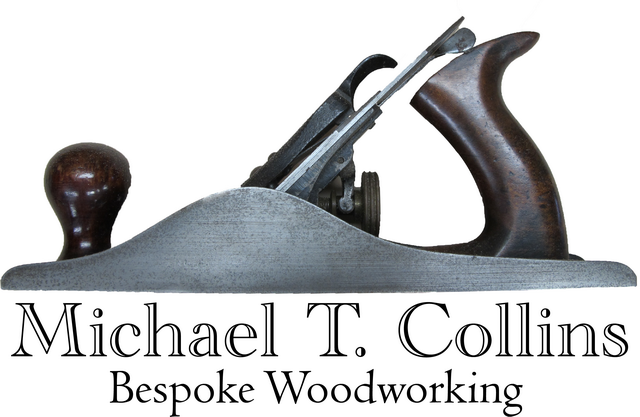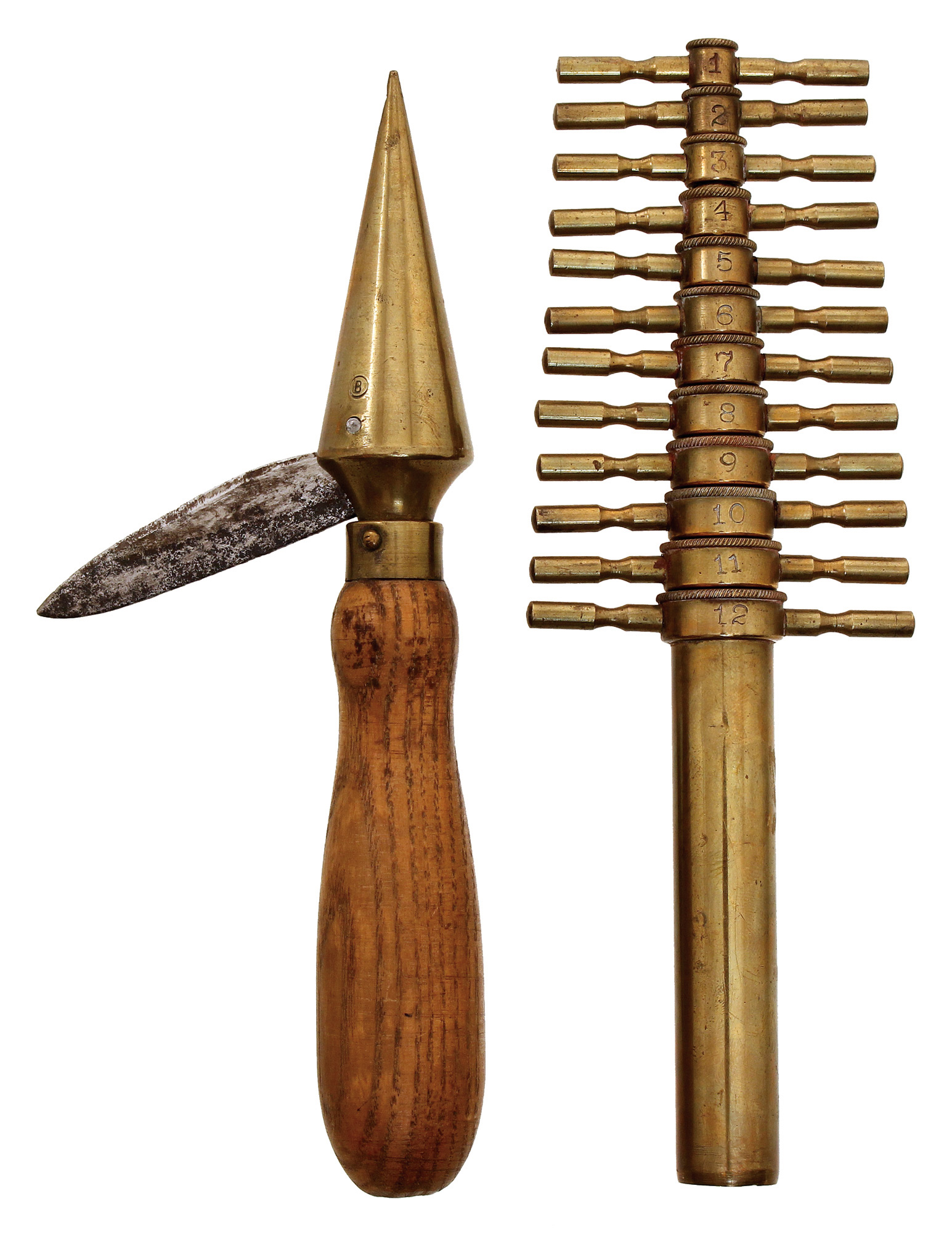A brass cone shaped top with a pivoting ‘knife’. The cone shows signs of rotational wear. The ‘knife’ is not sharp.
The tool is a Vintage Apothecary Brass Cork Cutter Punch Set marked 1-15 or simply a “Cork cutter sharpener”
several are available on ebay
The image at left was provided by Martin Donnelly of MJDtools.com – if you have not been to Martin’s site is is well worth a visit.
This tool was used to sharpen the tools that cut out those cork stoppers. Cork borers come in a number of different sizes and are like tubes with one end sharpened. Over time and constant use, the cutting edge of the cork borers begins to dull and requires sharpening.
This Apothecary cork borer sharpener consists of a wooden handle with a brass cone on the end. There is a not very sharp blade set into the cone which when opened folds right back into a slot in the handle at about a 135-degree angle. When not in use the blade folds into the cone. To use it you insert the brass cone into the borer, the blade is then brought forward to rest on the edge of the borer. Thumb pressure is applied to the back of the steel blade which when rotated sharpens the cutting edge of the cork borer. The total length of the tool is 7 ½ inches (19 cm). The blade is approximately 2 ½ inches (7 cm) long.
Incidentally, after the number of corks required had been cut from a piece of bark they would have then been soaked in water to make them more pliable. They would then be compressed to fit into the neck of the receptacle where they would then expand as they dried, so creating a tight fit so nothing could leak out. Hence the saying ‘put a cork in it’ when you want someone to shut up…




Thanks George for your interest in my site. sorry for the VERY long delay in answering. yes wine bottle are typically laid on there sides, although many bottles these days have screw caps and as far as I can tell it does not effect the flovour of the wine but then I am no connoisseur – just know what I like!
I work in a lab that holds a lot of chemical research tools at a research hospital and found a tool just like this today! I can imagine that it was used by chemists as they bottled new solutions that they wanted to store. It was delightful to see that someone else had taken to the internet to solve the mystery of this super interesting tool!
So glad That I was able to help you :-)